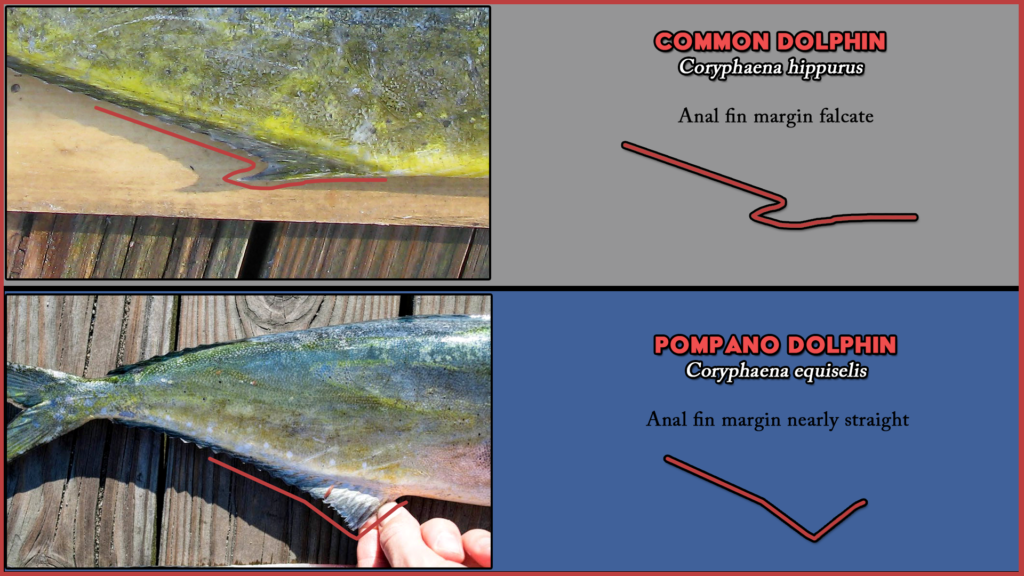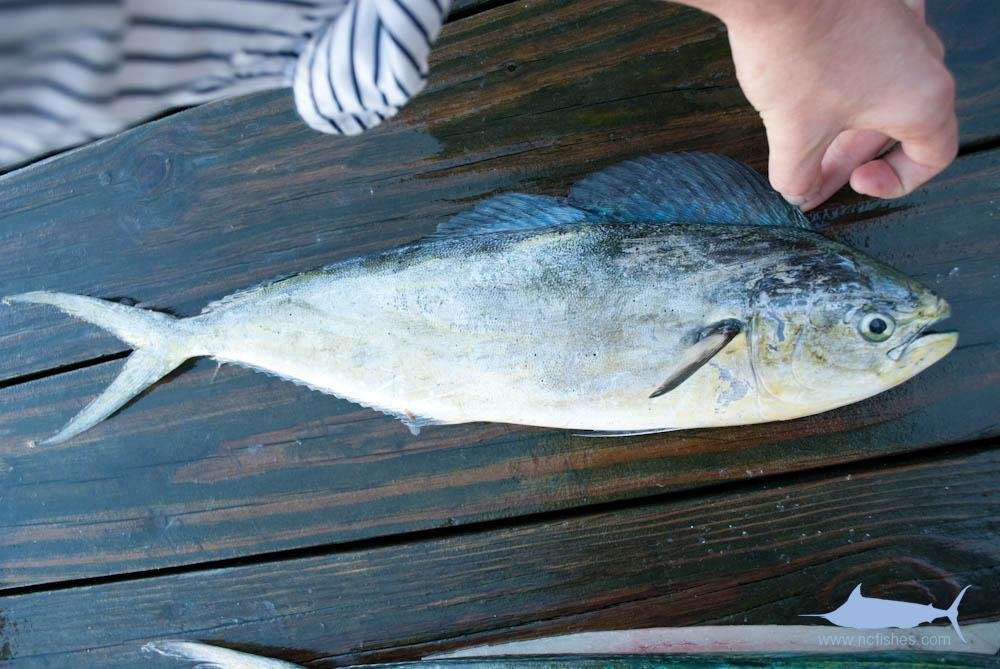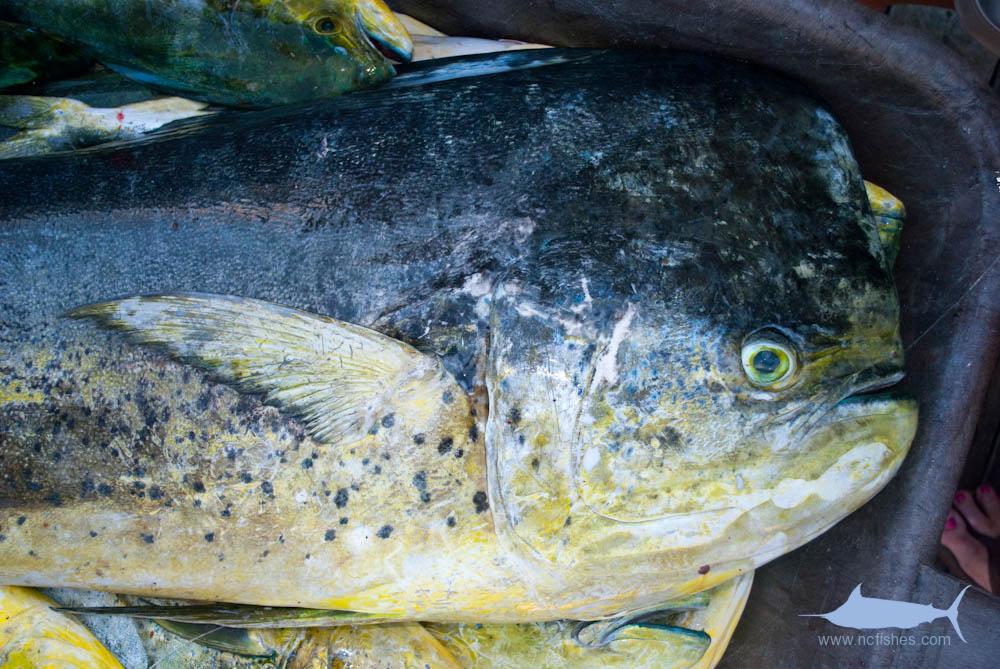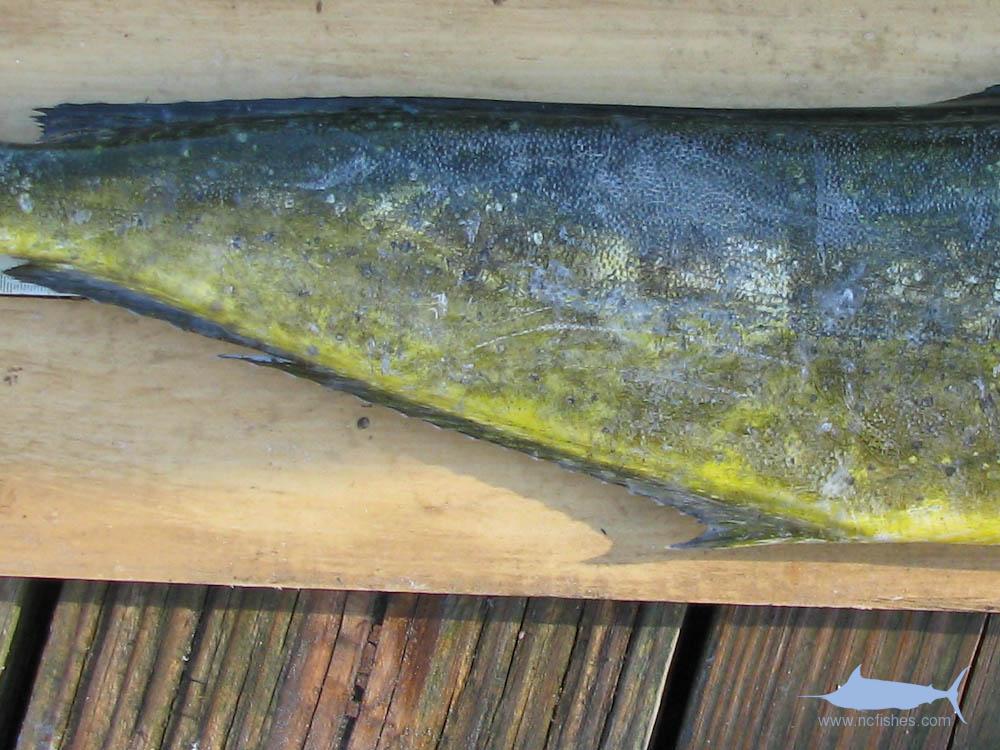Introduction
Dolphin are some of the most colorful, most widely distributed, and most widely recognized fishes in the world. The family Coryphaenidae consists of a sole genus Coryphaena, which encapsulates two species, C. hippurus and C. equiselis, the common dolphin and pompano dolphin respectively. Both species are known by many different regional names, such as mahi, dorado, dolphinfish, dolphin, and golden mackerel. Dolphin are very difficult to differentiate without a trained eye, a point this short article aims to address. In fact, many anglers are surprised to learn of the presence of more than one dolphin species.
Generic Dolphin Identification
Dolphins are a laterally compressed, fusiform shaped, fishes with a deeply forked caudal fin, and a long single dorsal fin that originates over the top of the head. They have a long anal fin that runs from about halfway through the dorsal fin, to the caudal peduncle. They can rapidly change colors between metallic greens, yellows, and blues, but these colors will quickly fade after death. Males develop large bony crests on top of their heads once mature, while females retain the juvenile head shape. There really are no other fishes in the ocean that can be confused with a dolphin, they are unique.
Pompano Dolphin Identification
Pompano dolphin are often overlooked fishes, as they resemble young common dolphin. However, pompano dolphin identification can be established by comparing anal fin shape, body shape, and pectoral fin length. If still in doubt, there is also a tooth patch on the tongue that has a different shape in the two fishes. I will cover these one at a time.
Anal Fin Shape
By far the easiest characteristic to check first, is the shape of the anal fin. The anal fin of a common dolphin is falcate, as per the following photo:
Whereas the anal fin of a pompano dolphin is nearly straight:

Body Shape
Pompano dolphin have a deeper body than the common dolphin. According to the FAO guides, the pompano dolphin has a body depth greater than 25% of the standard length, where as the common dolphin is less than 25%. The standard length is the length from the tip of the snout, to the last vertebra. In other words, the length of the fish, less the caudal fin. This body shape difference is generally the first characteristic you will notice, and is very evident in the following photograph. Compare the depth of the fish, to the length, and you will notice that the pompano is deeper and shorter than common dolphin of a similar size.
Pectoral Fins
Lastly, the pectoral fin of adult common dolphin are more than half of the length of the head, where pompano dolphin have proportionally smaller pectoral fins. This may not be that obvious if you are sifting through a pile of dolphins on the dock, but taken with the other distinguishing characteristics, will help you identify them correctly.
Tooth Patch
The tooth patch on the tongue is just as it sounds, a rough spot of tooth like structures on the tongue. The patch is small and oval on the common dolphin, and large and square on the pompano. I can’t find my photographs of this feature at the time of writing, but will upload one as soon as I take another.
Other Characteristics
If you wish to get more detailed, or if you still can’t correctly identify the fish, you can use the following table:
| Common Dolphin | Pompano Dolphin |
| Dorsal Fin Rays: 58 – 66 | Dorsal Fin Rays: 52 – 59 |
| Tongue Tooth Patch: Oval, small | Tongue Tooth Patch: Square, large |
| Caudal Vertebrae: 17 – 18 | Caudal Vertebrae: 19 – 20 |
Caudal vertebrae are the bones of the back that are posterior to the vertebrae that form the ribs. These vertebrae will not have ribs attached to them.
Conclusion
A final note I would like to emphasize, is that the common dolphin is, well, common. While the pompano dolphin is either caught much less frequently, or, is misidentified and reported with the common dolphin landings data. The pompano is without a doubt more oceanic in nature than the common dolphin, which combined with the similarity in appearance probably leads to the infrequency of reportings. Even knowing exactly what a pompano dolphin looks like, I would have easily missed the dolphin in this article had a friend not pulled it aside for me.
Sources:
FAO. 2002. THE LIVING MARINE RESOURCES OF THE WESTERN CENTRAL ATLANTIC.
Volume 3, Pages 1422-1425. 18 July 2014.






